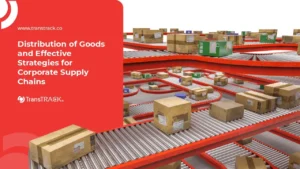Know Car Driver Behavior Using Fleet Management System
Posted on January 9, 2024 by Nur Wachda Mihmidati

Car driver can sometimes endanger themselves by engaging in dangerous behaviors. Then, what are these dangerous behaviors? This time we will discuss this through this article on TransTRACK!
Dangerous Car Driver Behaviors
Driving can be dangerous even if you’re a perfect driver – Even if you’re a highly skilled and experienced driver with an excellent record, you can make dangerous mistakes on the road. And when driving, any mistake we make can have deadly consequences in a matter of seconds. Stay safe, and be alert by avoiding these dangerous driving mistakes.
Car Drivers Texting While Driving
One in four motor vehicle accidents now involve cell phones, texting or using our cell phones can triple our risk of crashing. Texting takes our attention and attention away from the road, whether we’re on the freeway or in a neighborhood. We are more likely to hit objects, cars, or people on the road or dangerous turns in the road. Turn off your phone, keep it out of reach, or just ignore incoming texts. Or, if you’re impatient, pull over to answer the text, then get back to driving safely and with full attention.
Speeding Car Driver
Everyone knows this: speeding is an obvious way to drive dangerously. It is also a direct way to end up dead on the road, as speed is a contributing factor in 26% of all fatal crashes. Speed can also make collisions more dangerous, increasing the impact and potential for injury or death. We may be tempted to reach our destination faster, especially if we’re running late. But it’s not worth the risk (or time, or hassle) of an accident, and certainly not worth our health or lives. Go with the flow and maintain a reasonable speed for the traffic you’re in. It will be much safer to stay at a slower speed.
Aggressive Car Driver and Road Rage
Aggressive driving doesn’t just drive other drivers crazy; it can kill you too. In 56% of fatal accidents, aggressive drivers are to blame. This can include reckless driving, not following signs, erratic lane changes, or failure to obey traffic laws. Aggressive driving can also turn emotional on the road, making situations more dangerous as drivers race, deliberately bump into, or taunt each other. It can even lead to road violence. When our patience is tested, it is safer to practice polite driving at all times.
Driving in Bad Weather
We may be driving in darkness, heavy rain, floods, or other weather. And that can lead to slippery and treacherous conditions that make it extremely dangerous to stay at the speed limit. Be smart about your driving, and consider whether you should slow down to stay safe during bad weather and other driving challenges.
Failing to Maintain Vehicles
Our vehicles are meant to last for years, but they are not meant to run forever without any maintenance or care at all. Parts wear out; fluids will get old, cloudy, even down to worn tires and brakes. These all require maintenance and replacement, and if we leave them too long, we could face dangerous situations. This could include tire blowouts, engine damage, and cars breaking down on the side of the road. we should follow our vehicle maintenance schedule, keep track of regular oil changes, and practice good tire care, including checking our tire pressure regularly.
Failing to Signal or Check Blind Spots
Changing lanes seems simple as we move from one place to another, but it can be one of the most dangerous maneuvers we make while driving. Swerving in and out of lanes, not turning on our hazard lights, or worse, not checking our blind spots can result in serious collisions on the freeway or highway.
Following Too Closely
We can usually choose how far away we are from the car in front of us. All too often, drivers choose to follow too closely. Whether we’re tailgating or just inching closer than we should, we’re just playing a dangerous game. It’s safest to keep a two-car gap between you and the vehicle in front. You should leave more space if driving in bad weather or following a large truck.
Not Wearing Seat Belts
Wearing a seat belt will not stop an accident, but if we are in an accident, it can save our lives. Even with today’s advanced safety features, wearing a seat belt is one of the most important ways to protect ourselves from serious injury or death during a car accident. It only takes a few moments to put on a seat belt and potentially save our lives. Remember to use properly installed car seats for children too.
Storing Loose Cargo in the Vehicle
Loose cargo such as objects or trash in the vehicle can cause various problems for the driver. Rolling objects can get stuck under the pedals, making them unusable when needed. Loose cargo can also become projectiles in the event of an accident. Heavy or sharp objects dislodged in the cabin are extremely dangerous in the event of an accident. These objects can strike vehicle occupants
Ignoring Traffic Signals and Signs
Traffic signals and signs are installed along roadways for a reason. Traffic signals help control the flow of traffic safely and traffic signs communicate important information to those on the roadway.
Running traffic signals, such as red lights or stop signs, can cause severe accidents. Not following traffic signs can also cause accidents. Signs often convey safety information for drivers. By not following the instructions or warnings provided, accidents can occur.
Fatigued Car Drivers
Fatigue while driving can be as dangerous as impaired driving under the influence of alcohol. Fatigue can lead to slower reaction times, experiencing microsleep episodes, and poor decision-making. Any of these events can easily lead to an accident occurring where it would not have happened if the driver was not fatigued.
Never drive tired. Always get the recommended amount of sleep and practice healthy habits to ensure we are fit to drive.
How to Know Car Driver Behavior
Then, how do you know the behavior of the driver in the car? This time TransTRACK has a solution by using Fleet Management System technology equipped with a Driver Behavior feature that will monitor driver behavior in the car. You can analyze driver behavior using data collected from connected vehicles.
In addition, we can also identify risky driving behaviors and discover the true driving patterns of vehicle operators to identify unsafe practices or policy violations. For example, you can choose to detect different types of driving behaviors or events, including the following examples:
- Hard acceleration
- Hard braking
- Frequent braking
- Speeding
- Hard high-speed turns
- Slow driving
- Frequent stops
- Tired driver
You can also set criteria for driving behavior analysis by configuring the constraint parameters. For example, you can send a request to the TransTRACK team to customize the following constraint values:
- Speed limit
- Vehicle turning angle range
- Frequent acceleration and deceleration of vehicle speed
- Hard acceleration and deceleration
- Frequent braking
- Other braking problems
You can specify different criteria for different time periods, road types and other contextual conditions. For example, the speed threshold for a highway is different from that of a built-up urban area.
TransTRACK’s Driver Behaviour will be useful for anyone who uses a motorized vehicle. With the help of this feature, accidents that occur on the road can be minimized. Start using Fleet Management System in TransTRACK to minimize accidents that occur!
Recent Post
Topic :
Recommended Articles

 Bahasa Indonesia
Bahasa Indonesia








